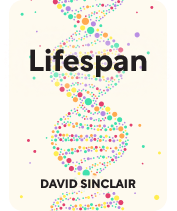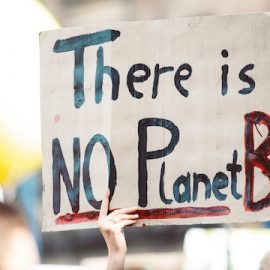

This article is an excerpt from the Shortform book guide to "Lifespan" by David Sinclair. Shortform has the world's best summaries and analyses of books you should be reading.
Like this article? Sign up for a free trial here .
How many people can the Earth accommodate? Is our planet in danger of overpopulation?
According to biologist David Sinclair, there’s no evidence that there is a limit to how much population the Earth can support. In his book Lifespan, he discusses the implications of increased longevity for the planet, coming to the conclusion that planet overpopulation is not something we should be worried about.
Here’s why human overpopulation concerns are overblown, according to David Sinclair.
David Sinclair on Overpopulation
Estimates of the maximum human population that Earth can support range anywhere from 8 billion (which we’ve already reached) to 16 billion. Sinclair says that a few estimates even place the maximum at around 100 billion people.
More to the point, most of those estimates don’t account for technological and societal advancements. In other words, they estimate the current maximum population that Earth could sustain, but by the time we reach that number, the true maximum could be far higher.
In fact, Sinclair says we should question the idea that there even is a maximum human population—it seems obvious that there must be a limit, but there’s no solid evidence to prove it. Perhaps technology will keep pace with our ever-growing population, offering ways to house and feed more people than we’d ever thought possible. For example, we could imagine floating cities, food replicators like those on Star Trek, and the possibility of colonizing other worlds.
| Why Is There Such Uncertainty? The enormous range of estimates for Earth’s maximum sustainable population—ranging from 500 million people to over a trillion—is the result of the wide array of techniques used to come up with those estimates. For example, the first known estimate of Earth’s carrying capacity came from the Dutch biologist Antoni van Leeuwenhoek, who simply took the population density of Holland and multiplied it by the estimated area of livable land on Earth. He concluded that Earth could support 13 billion people. Later studies tried to take more variables into account, such as the availability of food and fuel in different places. Still more advanced studies used dynamic modeling, trying to predict not only the available resources but how those resources would impact each other—for example, someplace with rich farmland might pollute its water with fertilizer and pesticide runoff. Naturally, the more variables a model tries to take into account, the more guesswork is involved in the final answer. Those layers of uncertainty lead to these wildly different estimates of Earth’s maximum population. |
Sinclair also points out that the last two centuries saw the biggest population boom in history, but at the same time we greatly improved quality of life for most people in the world: better education, better health care, better living conditions, and so on. Therefore, there’s no reason to assume that further increasing the population will reverse that trend.
Furthermore, even as our population increases, the environmental impact of each individual is going down. We’ve made great strides in reducing air and water pollution, and we’re moving toward using cleaner energy sources. There’s little doubt that we’ll continue making such advancements.
(Shortform note: Sinclair is severely downplaying the environmental impact of an ever-increasing human population; while it might be true that each individual will cause less harm as technology continues to advance, the overall harm we cause is still enormous. For example, a study from 2015 calculated (using very conservative estimates) that vertebrate species are currently going extinct 100 times faster than the natural extinction rate. It would take some truly incredible advances in clean energy production, agriculture, and waste management to offset the damage if our population keeps growing.)
Finally, birth rates have much more impact on the total population than death rates. Sinclair says that, globally, about 55 million people die each year—which sounds like a lot, but it’s nowhere near as many as are born each year.
(Shortform note: Again, Sinclair might be overly optimistic with regards to human overpopulation. In 2020, the global population experienced roughly 140 million births and 60 million deaths, for a total increase of about 80 million people. If anti-aging technology had prevented or greatly reduced those 60 million deaths, the overall increase in population could have been nearly twice what it was—140 million people instead of 80 million—which is much more significant than Lifespan makes it sound.)

———End of Preview———
Like what you just read? Read the rest of the world's best book summary and analysis of David Sinclair's "Lifespan" at Shortform .
Here's what you'll find in our full Lifespan summary :
- Why biologist and geneticist David Sinclair believes old age is a curable disease
- The potential problems of a world where people never die
- How the elderly stifle the economy






